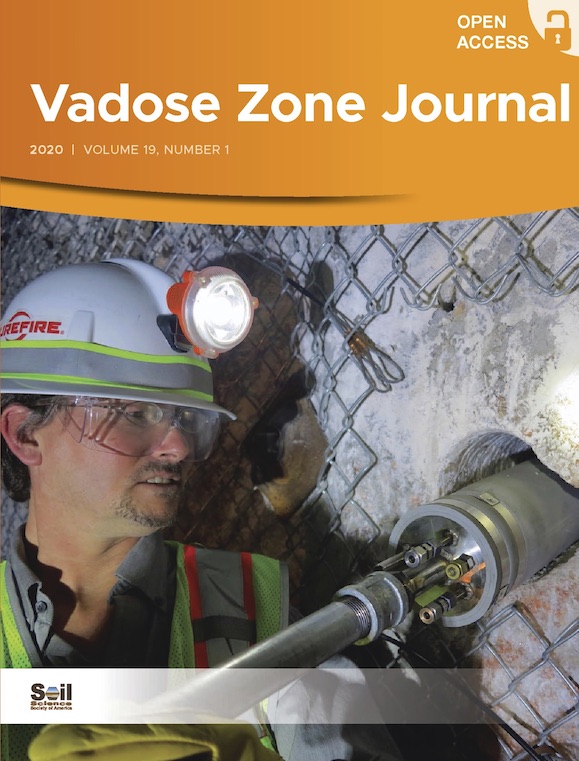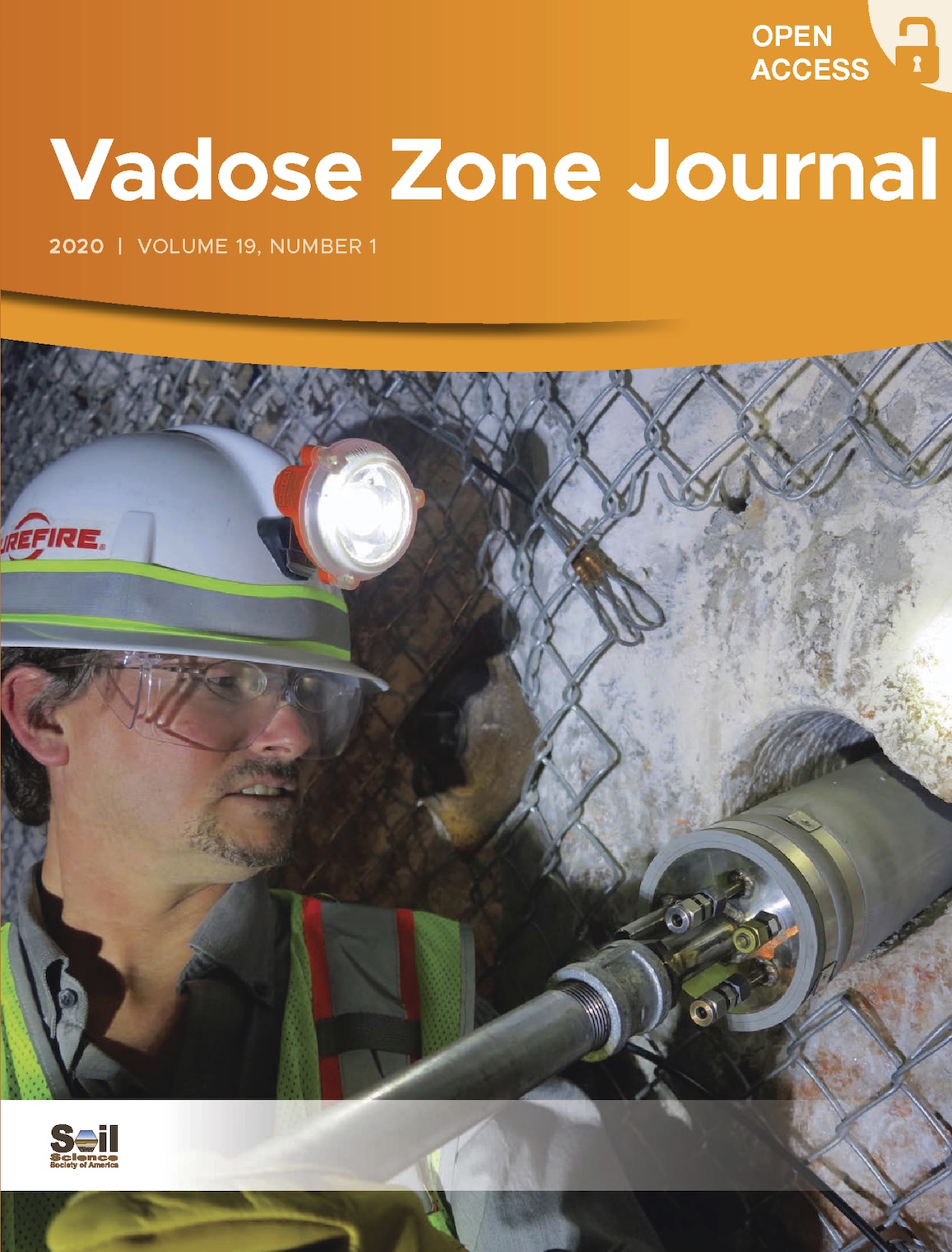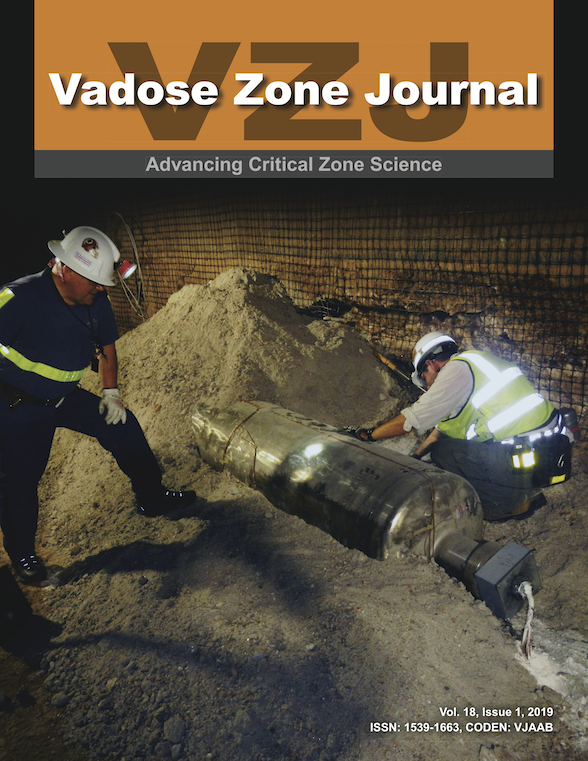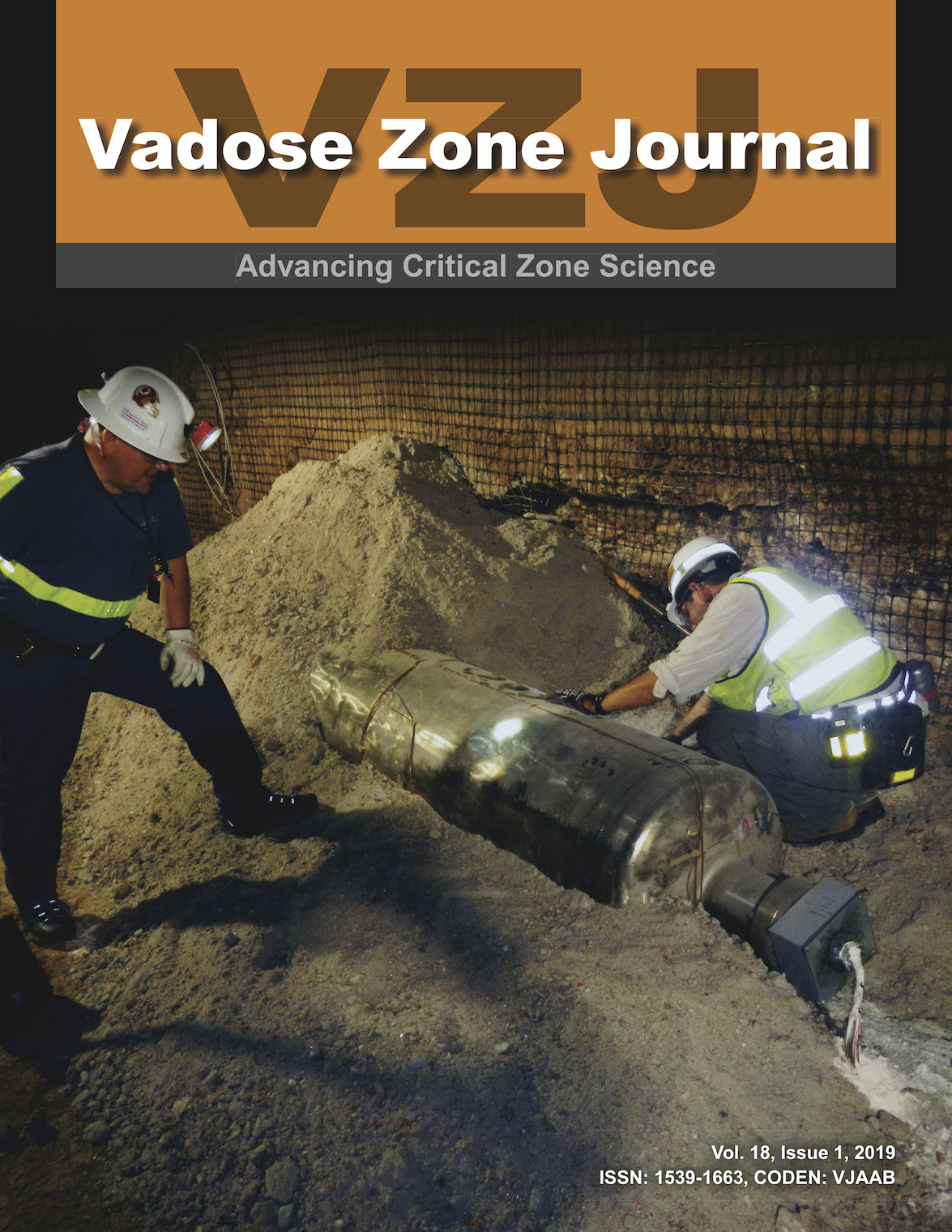Journals
Publications and conference proceedings in support of Los Alamos Salt Repository Science
Journal Covers
Featured Publications
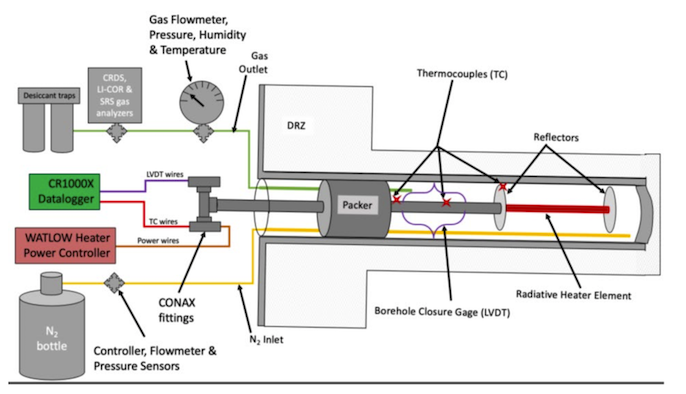
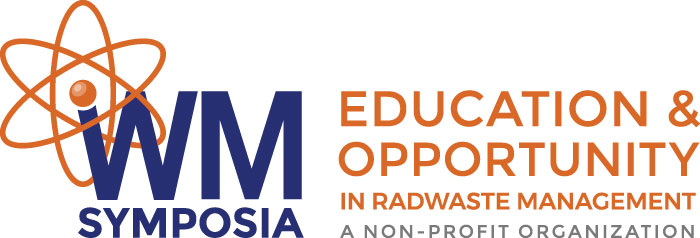
Brine Availability Test in Salt, a Heated Borehole Experiment at the Waste Isolation Pilot Plant, New Mexico, USA - 20233
Rahn, T., Kuhlman, K., Boukhalfa, H., Dozier, B., Ware, D., Otto, S., Weaver, D., Mills, M., Herrick, C., Rutqvist, J., Wu, Y., Guiltinan, E., and Stauffer, P. H.
WM2020 Conference
March 8-12, 2020
The Brine Availability Tests in Salt (BATS) is a US Department of Energy Office of Nuclear Energy (DOE-NE) supported activity as part of the Spent Fuel and Waste Disposition (SFWD) Campaign where we are performing simultaneous heated and control experiments in adjacent horizontal boreholes in the WIPP Salt Disposal Investigation drifts as part of experimental Phase 1 [1,2,3]. Phase 1a of BATS, a low- cost, small spatial-scale experiment performed in order to design instrumentation and methods for further experimentation in the URL, has been completed (June 2018 – May 2019) and is described elsewhere .e.g. [4,5,6]. In coincidence with multiple physical parameters that will be measured over the duration of the experiment ... [more]
Paper (PDF)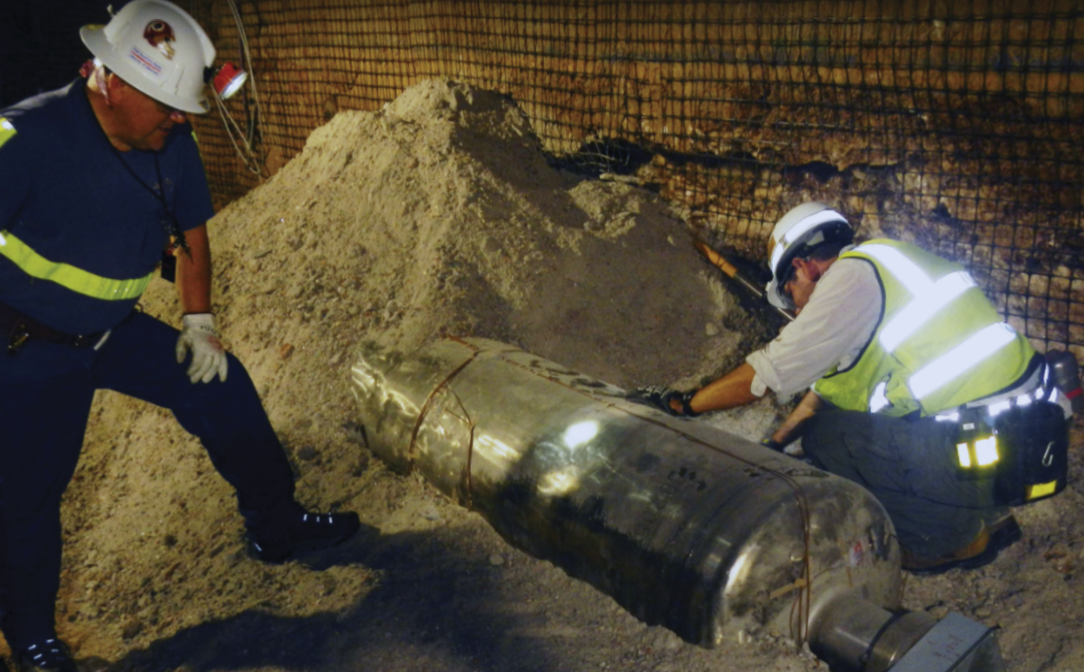

Waste Management 2020 Paper 20307 - Salt Program Overview
Stauffer, P.H., Kuhlman, K.L., Sevougian, S.D., and Rutqvist, J.
WM2020 Conference
March 8-12, 2020
This paper summarizes the current US Department of Energy Office of Nuclear Energy’s (DOE-NE) work towards developing and executing a research and development program that addresses both scientific and technical issues related to long-term disposal of spent nuclear fuel (SNF) and high-level waste (HLW) in a hypothetical bedded salt based geological repository. A primary goal of the program is to create a generic Geologic Disposal Safety Assessment (GDSA) Framework that can be used to help guide decisions on siting a possible future bedded salt repository. The generic GDSA work includes analysis of the impacts of heat generation caused by decay of short-lived radionuclides. We report progress in four primary areas ... [more]
Paper (PDF)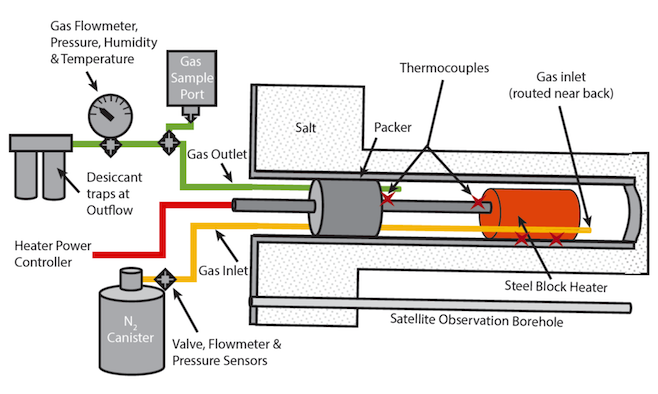

Brine Availability Test in Salt: THMC Simulations of a Heated Borehole in Salt - 20239
Guiltinan, E. J., Miller, T., Kuhlman, K. L., Rutqvist, J., and Stauffer, P. H.
WM2020 Conference
March 8-12, 2020
The Brine Availability Test in Salt (BATS) is a collaboration between Los Alamos, Sandia, and Lawrence Berkeley National Laboratories formed to reduce the uncertainties associated with long-term disposal of spent nuclear fuel (SNF) in a hypothetical bedded salt repository. Bedded salt formations may be an ideal location for disposal of nuclear waste due to their high thermal conductivity, extremely low permeability, and self healing capability. In this paper, we report on the first round of the BATS project with an emphasis on the supporting numerical modeling. The experiment was conducted at the Waste Isolation Pilot Plant (WIPP) and included ... [more]
Paper (PDF)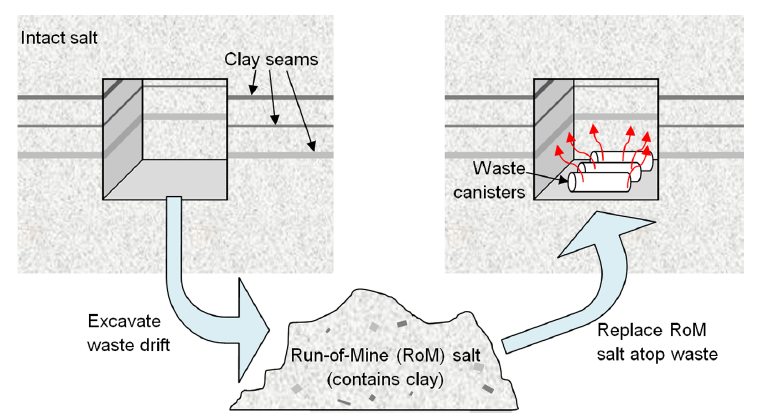

Hydrous Mineral Dehydration Around Heat-Generating Nuclear Waste in Bedded Salt Formations
Amy B. Jordan, Hakim Boukhalfa, Florie A. Caporuscio, Bruce A. Robinson, and Philip H. Stauffer
Environmental Science & Technology, Vol. 49(11)
May 2015
Heat-generating nuclear waste disposal in bedded salt during the first two years after waste emplacement is explored using numerical simulations tied to experiments of hydrous mineral dehydration. Heating impure salt samples to temperatures of 265 °C can release over 20% by mass of hydrous minerals as water. Three steps in a series of dehydration reactions are measured (65, 110, and 265 °C), and water loss associated with each step is averaged from experimental data into a water source model. Simulations using this dehydration model are used to predict temperature, moisture, and porosity ... [more]
Paper (PDF)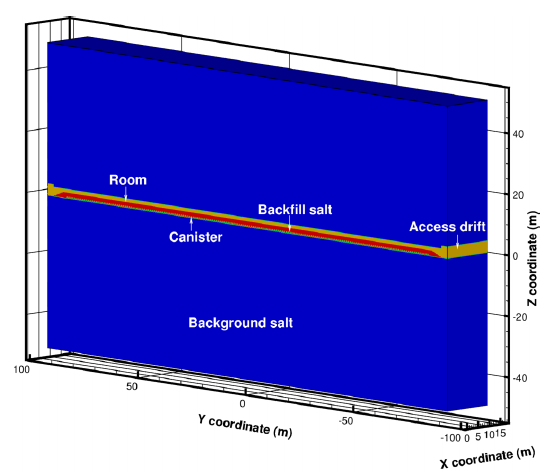
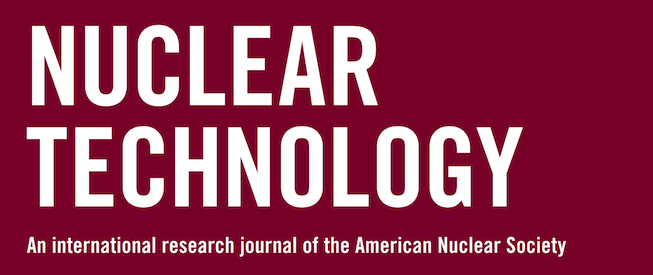
Thermal Modeling of High-Level Nuclear Waste Disposal in a Salt Repository
Dylan R. Harp, Philip H. Stauffer, Phoolendra K. Mishra, Daniel G. Levitt, and Bruce A. Robinson
Nuclear Technology, Vol. 187(3)
July 2013
Salt formations have received recent attention for geologic disposal of heat-generating, high-level nuclear waste (HLW). Existing investigations are summarized and expanded upon using analytical and numerical models to investigate simulated temperatures in the salt after emplacement of HLW. Analytical modeling suggests that temperature variations near canisters will be smooth, indicating that the system can be approximated by a coarsely discretized numerical model. Two multidimensional parameter studies explore canister configuration using characteristics from (a) defense HLW and (b) spent nuclear fuel (SNF) waste ... [more]
Paper (PDF)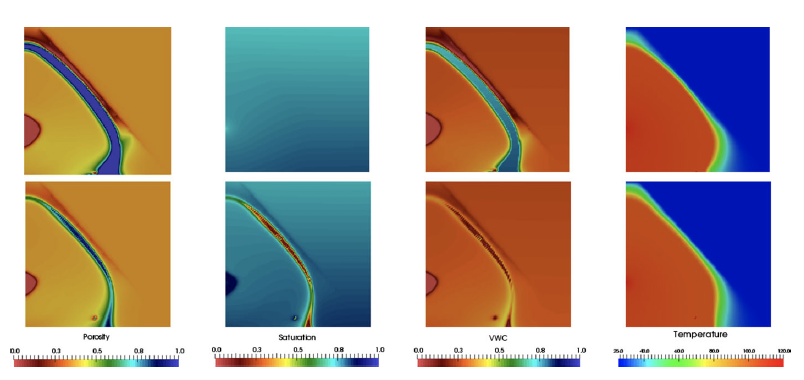

Impact of a Porosity-Dependent Retention Function on Simulations of Porous Flow
Peter J. Johnson, George A. Zyvoloski, and Philip H. Stauffer
Transport in Porous Media, Vol. 127(1)
February 2018
Numerical models of flowin unsaturated porous media employ a range of functions to account for capillary effects. In general, these retention functions are assigned at the beginning of the simulation and calculate capillary pressure based on saturation. However, many porous systems involve changes in porosity wherein the retention function should change during the simulation. Model runs which neglect these changes may produce unphysical results such as retention of liquid water in air-filled void spaces. We present a conceptually and numerically simple function that recalculates the retention function at each timestep based on the updated porosity. The new retention function updates the maximum capillary pressure, residual saturation, and maximum saturation prior to applying the saturation fit. ... [more]
Paper (PDF)

Heat-Generating Nuclear Waste in Salt: Field Testing and Simulation
Peter J. Johnson, Shawn Otto, Douglas J. Weaver, Brian Dozier, Terry A. Miller, Amy B. Jordan, Nathan G. Hayes-Rich, and Philip H. Stauffer
Vadose Zone Journal, Vol. 18(1)
February 2019
Investigations relating to in-drift disposal of heat-generating nuclear waste in salt have raised questions about heat–brine interactions in the unsaturated run-of-mine (RoM) salt pile used as backfill. These interactions have the potential to change the structure of the RoM salt surrounding the canister, possibly altering long-term containment of the source. An experiment is in progress at the Waste Isolation Pilot Plant (WIPP), New Mexico, in which a heated canister was placed on the floor of an open drift, covered in a pile of RoM salt, and energized with 1000 W. Temperature in the RoM salt pile had stabilized after about 15 d, allowing evaluation of the heat-up period of the ongoing experiment. ... [more]
Paper (PDF)

Development of an Experimental Approach for Thermal Testing in Bedded Salt
Hakim Boukhalfa, Doug S. Ware, Peter J. Johnson, Shawn Otto, Douglas Weaver, Brian Dozier, Philip Stauffer, Melissa Mills, Courtney Herrick, Kris Kuhlman
WM2019 Conference
March 2019
Safe and permanent isolation of used nuclear fuel (UNF) and high- level nuclear waste (HLW) is an integral component of the cradle- to-grave philosophy of radioactive waste management. Out of the multitude of rock types considered for the permanent deep disposal of nuclear waste (tuff, shale, granite, clay, and salt), salt has received significant interest particularly because of the advantage offered by salt as an impermeable and dry medium with self-sealing properties. The concept of HLW disposal in salt has been investigated through several testing campaigns in the U.S. and in Germany. Several knowledge gaps still exist in our understanding of how brine ... [more]
Paper (PDF)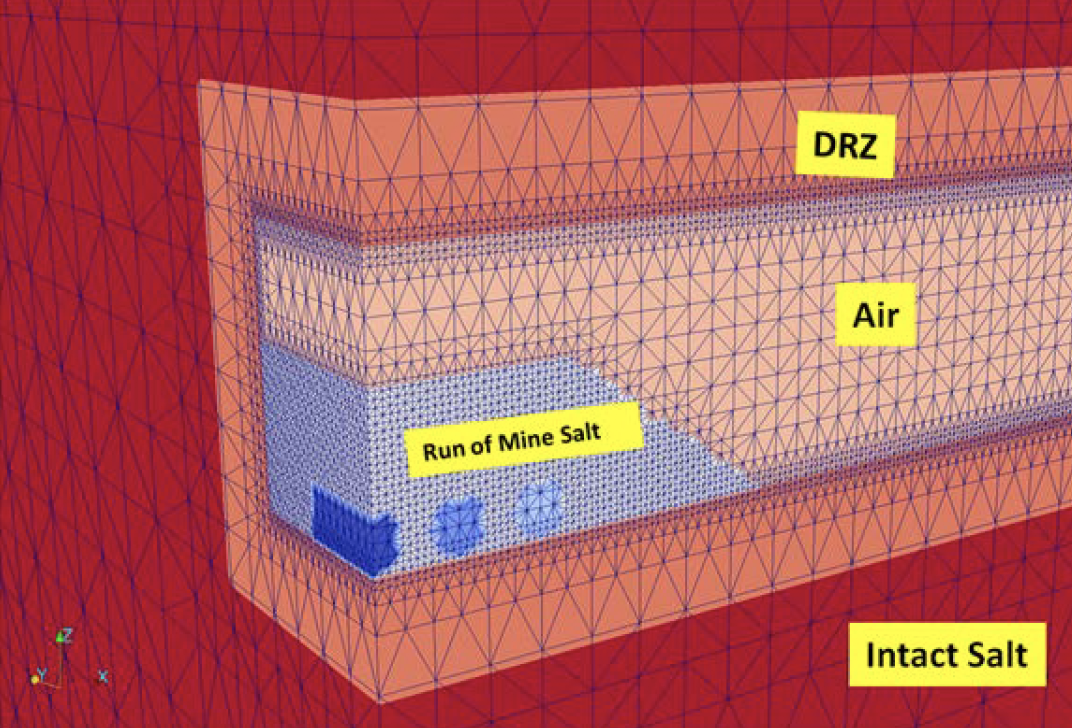

Simulations in Support of the Salt Defense Disposal Initiative (SDDI): Water and Salt Transport Driven by Heat Generating Nuclear Waste in Bedded Salt
Philip Stauffer, Bruce Robinson, Roger Nelson, Dylan Harp, Amy Jordan, Hakim Boukhalfa, Yassin Laybed, James Ten Cate
WM2014 Conference
March 2014
Results are presented from simulations performed in support of the Salt Defense Disposal Initiative (SDDI), a field test designed to confirm the behavior of bedded salt as a geologic disposal medium for defense high-level waste (HLW). The SDDI emplacement concept is to place remotely handled waste canisters on the floor of disposal room drifts and cover them with run-of-mine (RoM) salt. Multiphase numerical modeling is used to gain insight into the dominant heat and mass transport processes that are driven by heat generating HLW buried in bedded salt. Findings show that during the proposed 2 year SDDI test, formation of a heat pipe and subsequent salt ... [more]
Paper (PDF) Presentation (PDF)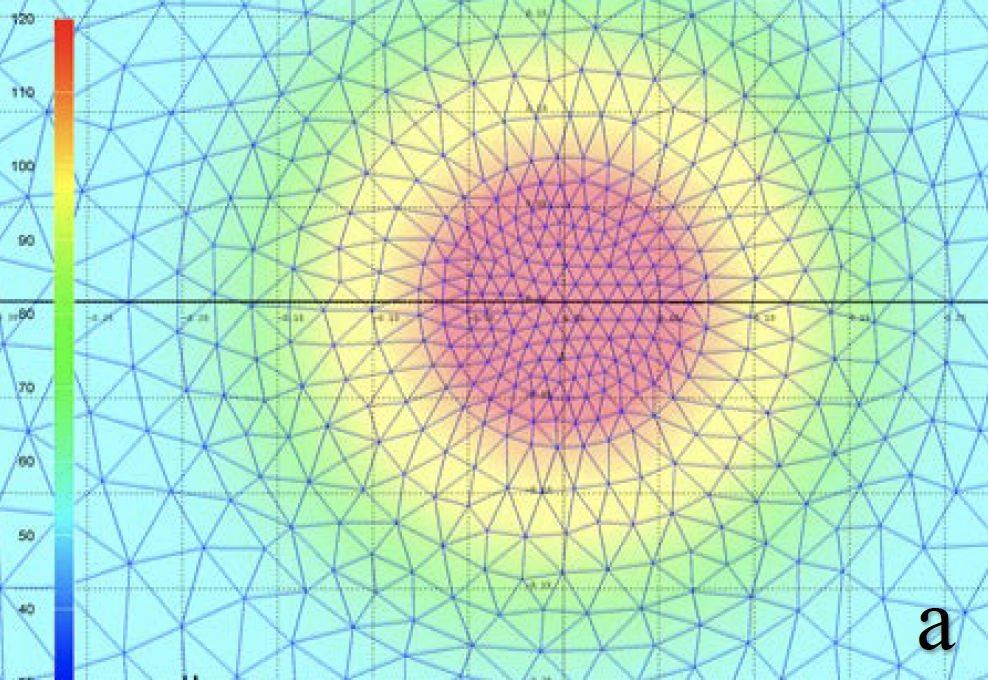

Experiments and Simulation of a Borehole in Salt to Understand Heat, Brine, and Vapor Migration
Suzanne Bourret, Peter J. Johnson, Shawn Otto, Douglas Weaver, Brian Dozier, Hakim Boukalfa, Terry Miller, Philip Stauffer
WM2019 Conference
March 2019
Disposition of heat-generating nuclear waste (HGNW) remains a continuing technical and sociopolitical challenge. Numerous concepts for HGNW management have been proposed and examined internationally, including an extensive focus on geologic disposal. One proposed geologic material is salt because of its low permeability and viscoplastic deformation that causes self-repair of damage done to the salt by waste emplacement activities. Evaluating the safety and technical challenges of storing HGNW in a salt repository is an ongoing process involving experiments and supporting numerical simulation. Currently an experiment is underway at the Waste Isolation Pilot Plant (WIPP) to explore how the presence of a heat generating source affects phenomena such as brine migration, vapor transport, and mechanical changes to the bedded salt. ... [more]
Paper (PDF)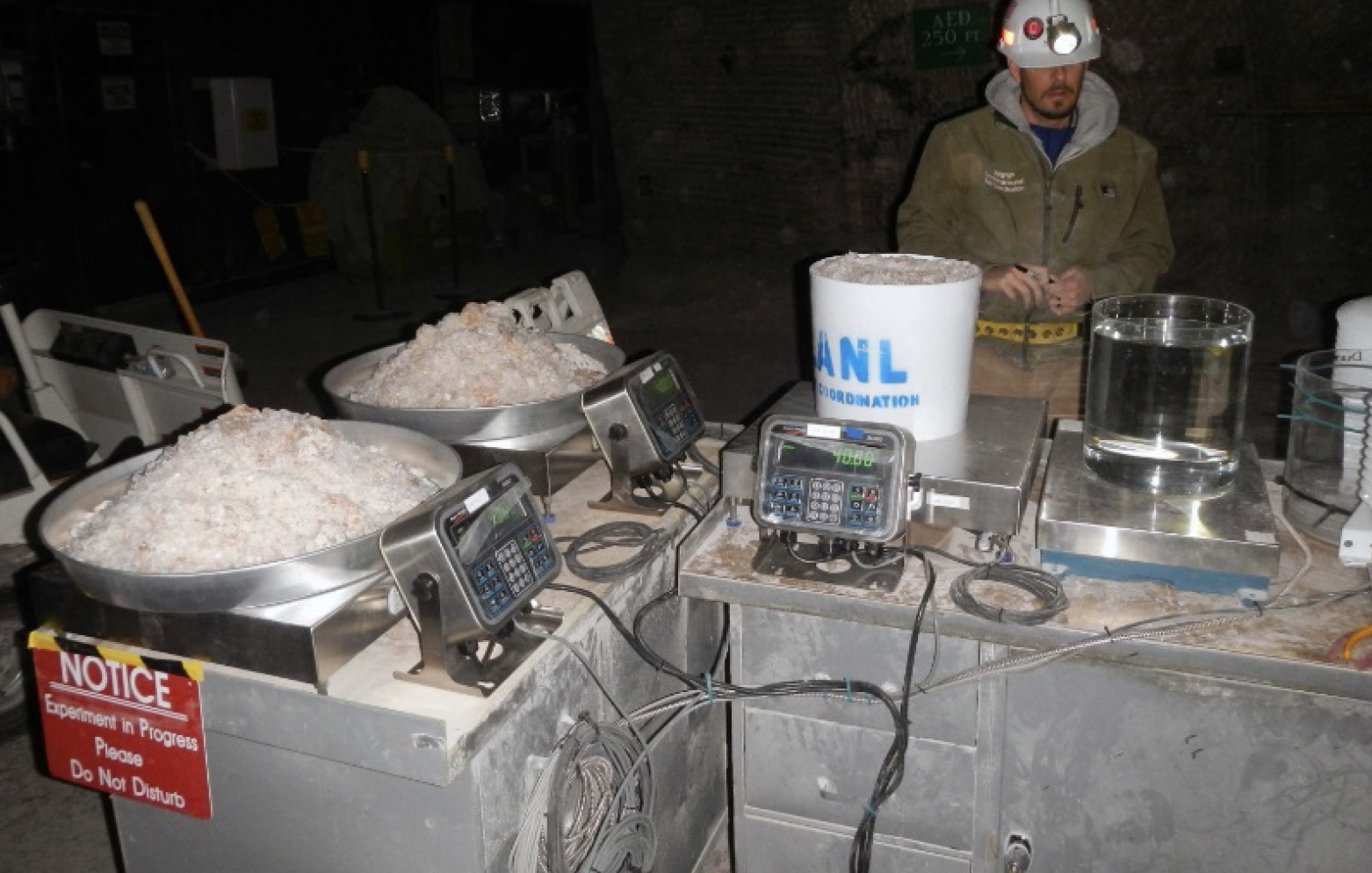

High Level Waste in Salt Repositories: Experiments and Simulations of Evaporation in the Underground
Suzanne Bourret, Shawn Otto, Peter J. Johnson, Douglas Weaver, Hakim Boukalfa, Philip Stauffer
WM2017 Conference
March 2017
Advances in simulation of coupled heat and mass transfer in granular salt using the Finite Element Heat and Mass Transfer Code (FEHM) is presented in this paper. The modeling focuses on reproducing the results of an in-situ subsurface evaporation experiment beginning during the summer of 2015 carried out in the underground at the Waste Isolation Pilot Plant (WIPP). Run-of-mine (granular) salt was placed in a metal pan, and sample mass, as well as ambient temperature and humidity, were measured continuously on a data logger through May 2016. Changes in moisture content of the salt are interpreted from the change in mass, and these data provide insight into evaporation and water retention characteristics from salt in the WIPP underground. ... [more]
Paper (PDF)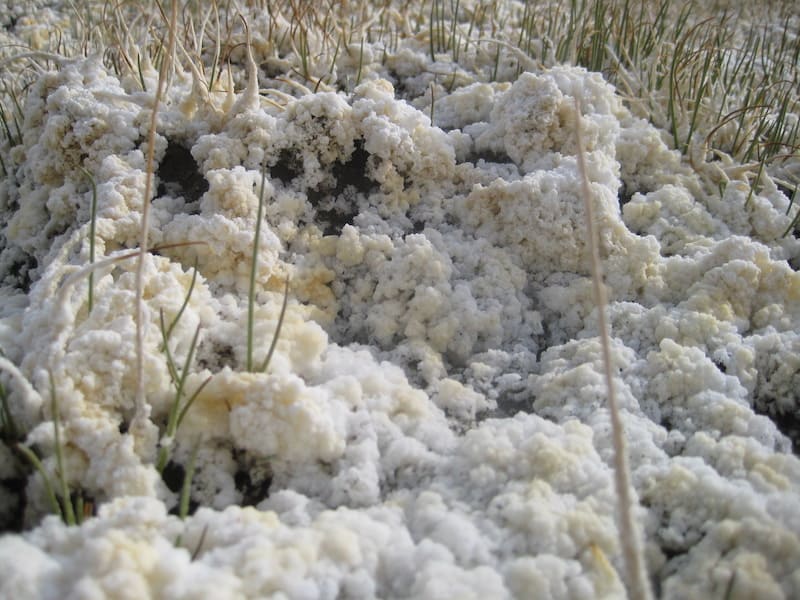

Salting the Earth [ARTICLE]
Sam Illingworth, The Poetry of Science
May 2020
This poem is inspired by recent research, which has investigated how salt may be used for the long-term, safe disposal of nuclear waste.
Visit Website
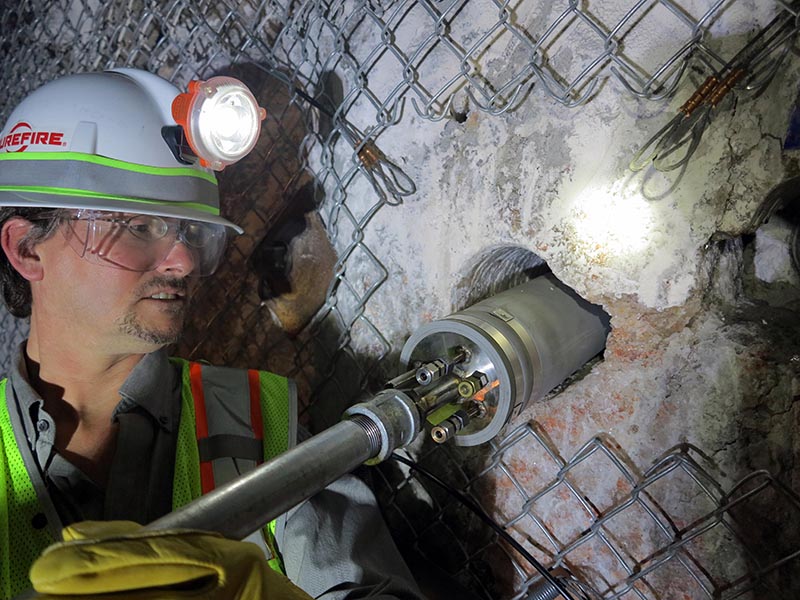

Are Salt Deposits a Solution for Nuclear Waste Disposal? [ARTICLE]
Susan V. Fisk, Soil Science Society of America
April 2020
Around the world, there are pools of water filled with nuclear waste waiting for their final resting place. This is waste that was created from decades of nuclear power generation, and the waste must be handled carefully. In the United States, scientists are studying several solutions for disposing of these wastes. Phil Stauffer and researchers at Los Alamos National Labs have been working with the US Department of Energy and other national laboratories on one long-term, safe, disposal solution: salt. “Deep salt formations that already exist in the United States are one candidate for long-term disposal,” says Stauffer. “This ‘high-level’ nuclear waste can create a lot of heat, ... [more]
Visit Website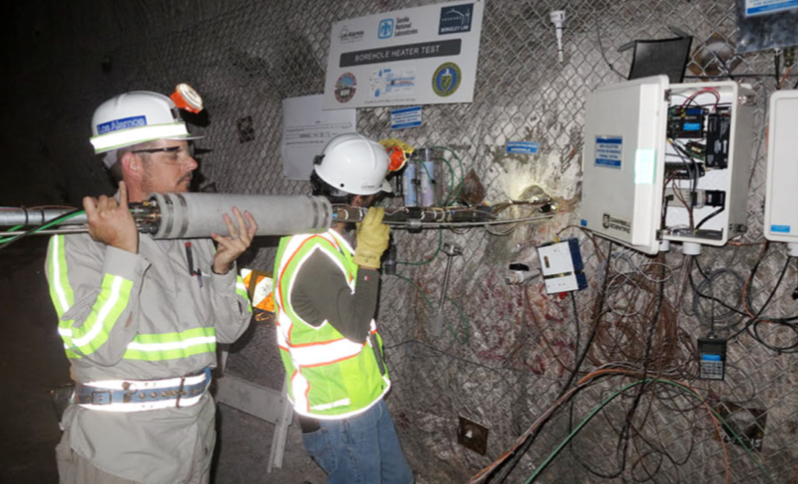

Temperature response and brine availability to heated boreholes in bedded salt
Eric J. Guiltinan, Kristopher L. Kuhlman, Jonny Rutqvist, Mengsu Hu, Hakim Boukhalfa, Melissa Mills, Shawn Otto, Douglas J. Weaver, Brian Dozier, Philip H. Stauffer
Vadose Zone Journal, Vol. 19(1)
April 2020
There is a growing need for disposal of high-level nuclear waste. To reduce uncertainty associated with brine availability to repository excavations in salt formations, a collaboration between Sandia, Los Alamos, and Lawrence Berkeley National Laboratories is performing a series of borehole-scale coupled process tests. Here, we report on the first round of the Brine Availability Test in Salt (BATS) project, a “shakedown” experiment called Phase 1s. Experimental testing included placing a resistive heater, a 260-W radiative heater, and a 750-W radiative heater within previously drilled horizontal boreholes at the Waste Isolation Pilot Plant (WIPP) ... [more]
Paper (PDF)
